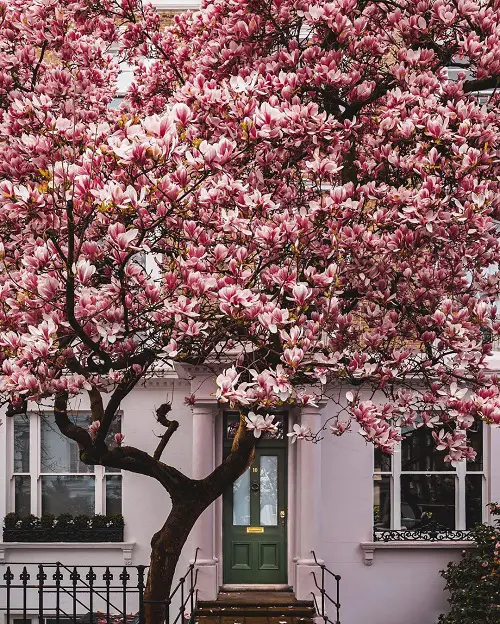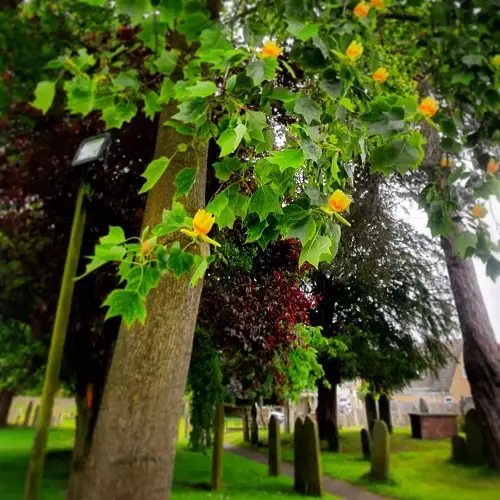Magnolia vs Tulip Tree – this has been a debate for many people and we’ll put an end to it with all the details!
Magnolia vs Tulip Tree – These two captivating species often become the talk of gardens and parks, each offering its own unique spectacle of color, form, and fragrance. But how do they differ, and which one might be the crown jewel for your outdoor space? Whether you’re a seasoned gardener or a nature lover eager to learn, you won’t want to miss this head-to-head comparison that dives deep into the distinct characteristics, care needs, and visual drama each one provides!
What is a Magnolia Tree?

The magnolia tree is a family of flowering plants belonging to the Magnoliaceae family. These plants are famous for their stunning, often cup-shaped flowers, which span a range of colors from pure white to vibrant pink, purple, or even sun yellow, depending upon the species.
The magnolia tree stands out with its enchanting scent, making it a beloved choice for gardens and landscapes. Magnolia leaves are usually simple and alternate. In addition to their decorative value, some magnolia tree species have traditional medicinal uses in certain cultures, adding to their importance.
What is a Tulip Tree?

Scientifically identified as Liriodendron, tulip trees earn their name from their remarkable resemblance to the tulip flowers. These trees, like magnolias, belong to the Magnoliaceae family. Tulip trees have distinctive greenish-yellow flowers with an orange band near the base, making them stand out in the landscape.
Another unique feature is their four-lobed leaves, which add to their charm. These are the tallest trees in eastern North America, often reaching an impressive height.
With deep-rooted historical and cultural significance, these majestic trees serve as a testament to nature’s awe-inspiring beauty and its intricate connection with human endeavors.
Magnolia vs. Tulip Tree – Differences

Flowers:
- Magnolias are known for their large, fragrant, and showy flowers, varying in color from white to pink, purple, or yellow, depending on the species. These flowers have a unique cup shape and a pleasant smell.
- Tulip trees, on the other hand, produce distinctive greenish-yellow flowers with an orange band near the base that resembles a tulip bloom. These flowers are also eye-catching but have a different appearance than magnolia flowers.
Leaf Shape:
- Magnolia trees typically have simple, alternate leaves that are not lobed and have an elongated oval shape.
- Tulip trees have four-pointed leaves that resemble tulip petals, adding to their visual appeal.
Size:
- Although magnolia trees vary in size from species to species, they are generally smaller than tulip trees, typically reaching heights of 15 to 80 feet.
- Tulip trees are among the tallest trees in eastern North America. They can reach an impressive height of 70 to 100 feet, considerably taller than most magnolia species.
Geographical Distribution:
- Magnolia trees can be found worldwide, and various species are adapted to different regions, including Asia, the Americas, and the Mediterranean.
- Tulip trees primarily inhabit the eastern regions of North America, where they play a significant role in the region’s natural landscape.
Cultural Significance:
- Many regions hold magnolias in high cultural regard, frequently cultivating them in gardens and landscapes due to their aesthetic appeal.
- Tulip trees earn esteem for their unique flowers and towering presence, distinguishing them as a special feature in the forests of eastern North America.
Magnolia vs. Tulip Tree – Similarities

Flowers:
Both magnolia and tulip trees produce striking and visually appealing flowers. Despite their variations in shape and color, both trees are renowned for their impressive and attractive flowers.
Ecological Importance:
Both trees play a role in supporting wildlife and ecosystems. They provide habitat and food for a range of nature, including birds and insects, and contribute to the overall biodiversity of their environment.
Decorative Use:
Tulip and magnolia trees hold great value for their ornamental qualities. Many gardeners, landscapers, and urban planners plant these trees due to their aesthetic charm.



We have a beautiful, little tulip magnolia tree in our backyard. We just got a puppy were wondering if these trees are toxic to dogs. I’m having trouble finding out any information online regarding possible toxicity.
We don’t want take the chance of our dog getting sick and don’t want to uproot our tree if it’s not necessary.
Thank you for any help you can provide.